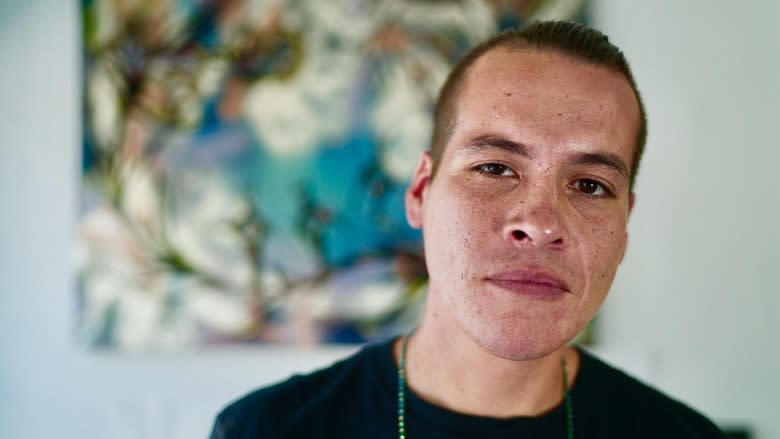New Indigenous tattoo parlour and gallery aims to defeat 'stigmas and stereotypes'
Inside his newly-opened tattoo parlour on Jarvis Street, Toby Sicks draws an intricate tree design on a customer's arm as the buzz of his tattoo machine fills the small space.
"The tree is rooted, so it has a long history behind it. It means something to culture and tradition," he explained while filling in the tree's black outline.
Culture and tradition are at the core of Sicks' new business endeavour, Inkdigenous Tattoo, which opened in Moss Park on Sunday.
Sicks poured his own money into the business and spent a month setting it up, transforming the little shop he leased from a run-down space into a renovated tattoo parlour and gallery, where the white walls are now lined with paintings.
"If it's painting, if it's merchandise, if it's tattoos, it's all done by Indigenous people," Sicks said.
But it's also much more than a tattoo parlour, he said.
The shop is meant to be a safe haven and educational space, he explained.
A place where a member of Toronto's Indigenous community can learn more about their culture. A place where someone new to the city from Thunder Bay can find out where to turn for shelter or Indigenous services. A place where non-Indigenous customers can gain newfound understanding of Indigenous artwork and "defeat the stigmas and stereotypes."
First Nations, Metis and Inuit people all have a home in the shop and gallery, said resident artist Nyle Miigizi Johnston, an Anishinaabe visual storyteller, painter and tattoo designer.
"But at the same time, we're all part of a global community, and we're all trying to learn together," he added. "It's an open space for everybody."
Anyone can "come in with a good mind and a good heart" and ask questions — though some of those questions have answers rooted in Canada's dark history.
"Five hundred years of intergenerational trauma, 500 years of lost language, culture and tradition, has made a huge gap in the development of Indigenous people," said Sicks. "We were on idle because we were still just trying to feel the impacts of what was going on."
There's an underlying element of activism in Sicks' and Johnston's work, as well. They say a portion of sales are going towards an Indigenous language and culture camp, and they're also launching a fundraising campaign for Missing and Murdered Indigenous women later this month.
But above all, the focus is on sharing Indigenous stories through art.
"We're reliving our way of life the way it's supposed to be," Sicks said. "Identity is a huge part of growing in society, and who you are as a person. If you have a lost identity — then who are you?"
Said Johnston: "We need to not be afraid to share our stories, because they're beautiful."




